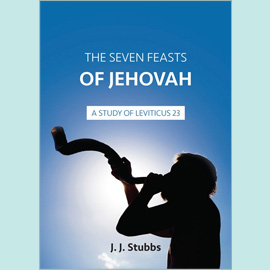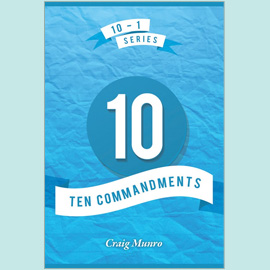Theodosia Anne Howard was born in the parish of Powerscourt, south of Dublin in County Wicklow, in 1800, at the threshold of a new century and a new phase in the often turbulent history of Ireland. In August of that year the union of Great Britain and Ireland was authorised by legislation of both parliaments, and in consequence the Irish parliament ceased to exist, Irish members thereafter sitting in Westminster. This soon resulted in a Home Rule movement that continued for just over 120 years with intermittent periods of extreme violence.
The Howards were an old aristocratic family, Theodosia’s father being a brother of the third Earl of Wicklow, and she grew up within the close knit Protestant Anglo-Irish community. At that time a number of the Anglican clergy were strongly evangelical and of such the Rev. Robert Daly, Rector of Powerscourt, was a notable example. It was through his ministry that Theodosia Howard was converted in 1819. In 1822 she married Richard Wingfield who had become the fifth Viscount Powerscourt in 1809. He too had benefited from Daly’s ministry and had been converted around 1820. Sadly their marriage was of brief duration as Lord Powerscourt died in 1823. Their only child, a daughter, died in infancy, but these sorrowful experiences and trials enabled Lady Powerscourt "to comfort those who were in any trouble with the comfort she herself had been comforted of God".
Lady Powerscourt from her conversion became a diligent student of her Bible. She took opportunities afforded by visits to England to hear well-known preachers, and to attend at least one residential conference held at Albury in Suffolk. This may have encouraged her to host conferences at Powerscourt House in the years 1830 to 1833. The conferences were subsequently held in Dublin, and finally for a few years in England. Prophetic studies formed a major part of the programmes of these conferences but other subjects were considered. Clergy and lay persons from all over Britain were invited, and participants included such well known names as, J G Bellett, J N Darby, Henry Craik, Capt. Percy Hall, George Muller, and B W Newton. One source indicates that the first conference was attended by 35 clergy, 15 laymen, and 20 ladies. Initially the conferences at Powerscourt House were chaired by the Rev. Daly (later bishop of Cashel), however at the conclusion of the 1832 conference he expressed grave anxieties (from his point of view) concerning controversial topics including the relation of believers to the existing (unfaithful) churches, and thereafter his involvement appears to have declined. It is fascinating to contemplate the nature of the discussions held between those men of deep learning. Their inquiry into the Scriptures was earnest and sincere; however, it seems that dissension emerged particularly between Anglican churchmen and "brethren" participants who became convinced of their duty in the light of Scripture to withdraw from existing churches.
Lady Powerscourt, soon after the 1832 conference, withdrew from the Established Church (of Ireland) to meet with brethren at Aungier Street in Dublin. It is greatly to her credit and to that of the Rev. Daly that he wrote, "In the only step which we could not but disapprove, and which could not but grieve us, we feel no hesitation in saying; we are assured she had a single eye to God…She did it with much pain, and much personal suffering and struggle and never in a spirit to lessen her love to those whom she valued as fellow disciples of Jesus". It was a remarkable example of brotherly kindness, of Christian grace and courtesy being undiminished by ecclesiastical differences, an example we do well to emulate. The Rev. Daly gave further testimony to the spiritual calibre of Lady Powerscourt in his preface to the 1838 edition of her letters and papers. He wrote of her: "She, of all the Christians I have been privileged to know, came nearest to that which she has, in such strong, uncommon terms, stated to be her idea of a Christian; not one who looks up from earth to heaven, but one who looks down from heaven upon earth. She appears to have ascended a high and holy eminence, and from thence to have looked down upon these earthly scenes, with which too many are entirely engrossed; living up to that high and spiritual requirement of the apostle, Set your affection on things above and not on things on the earth; for ye are dead, and your life is hid with Christ in God". The witness of a contemporary who knew her well is perhaps of greater weight than any insight gained by reading her writings.
The published letters of Lady Powerscourt comprise a selection of 80 letters written between 1821 and December, 1836. The style of writing is that of a cultured, well-educated person of the period, and might not be appreciated by all modern readers, but the letters clearly express the thoughts of one who had a deep experience of the ways of God and of the love of Jesus. Many were to saints in the furnace of affliction, and in writing she was weeping with them. She believed trial and suffering to be normal Christian experience and she saw that as the chastening of the Lord. To a dear friend she wrote with reference to a most trying visitation, "…and though He mingles the ingredient of sickness and trial, yet there are drops from the fountain of everlasting love mingled to sweeten the draught". Again, pain and suffering is described as "an experience of His tenderness". When needful she did not shirk from giving sound advice backed by Scripture, and in doing so wrote passages which are, as another has commented, "often penetrating in their analysis of the human heart". There are examples of delightful phraseology as in a brief letter written in April, 1829: "I hope you sometimes think of me when you go in before the Lord". One is impressed by such a dignified request for prayer. She appreciated letters received and in acknowledging one she replied in the last month of her life, "I believe it is by little things the children are fed. He gives us our meat in due season. In this way I have often found letters a special means of grace, and I believe they would be more so, and no loss of time, did we more write in faith".
Lady Powerscourt’s papers on Genesis 22, and Psalms 22, and 23 are devotional in character but not devoid of practical lessons as from Genesis 22.3: "Early, no hesitation – no time lost in murmuring – simple, immediate obedience is faith – no questions; he obeyed because commanded. Prompt obedience is expected. I made haste, and delayed not to keep Thy commandments". The following beautiful comment on Psalm 23 has become well-known: "The believer can boldly say The Lord is my Shepherd. The believer shall not want, because his Shepherd is the Lord. The believer shall not want because the Lord is his Shepherd. His Shepherd is the All-sufficient, nothing can unite itself to Him, nothing mingle with Him – nothing add to His satisfying nature – nothing diminish from His fullness. His treasury of gifts has been dearly purchased, when He has paid the uttermost farthing".
Lady Powerscourt died on 31st December, 1836. For the greater part of her life she had been a member of the Church of Ireland, and as such a shining example of the deep piety and spirituality of many Anglicans of that era. It is good to remember that God has choice saints in many places, and frequently in obscure circumstances. She lived in a period when the teaching of Scripture in many matters became better understood as earnest Christians diligently studied the Word of God. All did not become apparent all at once to them, but they were prepared, under deep conviction, and often at no little cost to themselves, to put into practical effect the truths they were learning. Lady Powerscourt did just that. She knew many of those whom we call "the early brethren", but there can be no doubt that her secession from the Established Church was a matter of personal conviction. She made the facility of Powerscourt House available in the Lord’s service by accommodating the early conferences, and thus helped in the understanding and dissemination of the truth of God. She therefore has an honoured place in the history of a great movement of the Spirit of God.
The writer gladly acknowledges his dependence upon the edition of "The Letters & Papers of Lady Powerscourt" published in 2004 by Chapter Two, from which the illustration on page 372 is taken.









